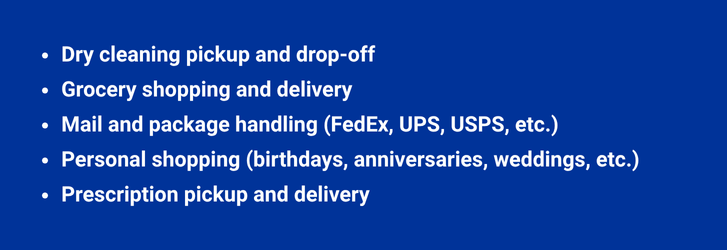Skip the shiny perks that look good on paper but don’t perform. Invest in the employee benefit that gives your employees more time.
Employee engagement in the U.S. slipped to its lowest point in nearly a decade — just 31% of workers are engaged, according to Gallup. Burnout is rising, and many organizations are navigating the tricky waters of return-to-office policies.
This is why, even in a labor market favoring employers, work-life balance still matters.
Some organizations are offering wellness perks, such as gym memberships or financial planning resources, as well as enhanced amenities like free snacks, or employee experience perks like flexible dress codes. However, these benefits only go so far. They rarely touch the everyday stressors that actually drain employees’ energy and focus.
That’s why one of the smartest, most practical benefits is finally stepping into the spotlight: errand-running services. Unlike surface-level perks, this is a solution that directly benefits employees — freeing up their time, reducing stress and making return-to-office transitions smoother for everyone.
The Problem: Life Admin Overload
Most employees aren’t just managing deadlines and projects. They’re also juggling car maintenance, prescription pickups, dry cleaning, returns, grocery runs and an endless list of household errands. This “life admin” drains energy, focus and time.
Research consistently shows that when employees are distracted by personal responsibilities, productivity plummets. In fact, the average employee wastes a little over two hours a day on non-work-related activities, according to a study of 10,000 U.S. workers.
Those hours are often lost during peak business time — when employees are mentally toggling between “work mode” and “life mode.”
The result? More stress, less focus and lower productivity.
The Solution: Errand Running as a Benefit
Errand-running services give employees time back, with Best Upon Request users saving an average of one hour per request.
Need groceries picked up? A car serviced? A package shipped? Employees hand off their responsibilities to one of our trusted professionals, allowing them to focus on what matters most — both at work and at home.
Unlike traditional one-size-fits-all benefits, errand-running services adapt to each employee’s unique real-life needs.
A working parent may use it for school supply runs. A registered nurse in a busy emergency department might need help with weekly grocery shopping. A traveling sales rep could desperately use help managing their home deliveries.
The key here is flexibility — no matter the industry, every employee benefits from having more time and fewer distractions.
Personal Errands
Household & Work-Life Balance Support
Well-Being Support
The Business Case for Employers
From a business perspective, errand running hits four critical objectives:
1) Boosted Productivity:
Employees who aren’t stressed about personal tasks bring a sharper focus to work. When everyday life logistics aren’t pulling them away, they’re more present and effective.
2) Reduced Burnout & Turnover:
Burnout is one of the costliest challenges organizations face. Employees who feel supported both at work and at home are more likely to stay with the company and stay engaged.
3) A Competitive Edge in Recruiting:
Unique benefits stand out. Errand running shows prospective employees that your company understands and supports real life outside the office.
4) Cost-Effective:
The cost of implementing an errand-running service pales in comparison to the cost of replacing a high-performing employee or losing productivity due to disengagement.
Why It’s Perfect for Companies with RTO Policies
Return-to-office (RTO) policies have put new demands on employees. Commuting eats up hours that were once used to tackle household to-do’s. Tasks like dropping off dry cleaning or getting the car serviced suddenly have to be squeezed into evenings and weekends. For many employees, that shift has added stress rather than relief.
By offering errand running as a benefit, companies can turn RTO from a friction point into a positive experience. It’s a tangible way to show: We understand that coming back onsite takes time away from your personal life, so we’ll help balance the load.
Instead of employees resenting the commute, they can actually use the time at the office more effectively — because errands are being handled in the background. That makes RTO policies easier to implement, reduces pushback and supports stronger morale.
The Bottom Line
Errand running as an employee benefit isn’t just about convenience — it’s about strategy. It directly addresses the time and stress challenges employees face every day, creating space for them to bring their best selves to work. For employers, it translates to stronger retention, higher productivity and a meaningful differentiator in the benefits marketplace.
And for companies with return-to-office policies, it’s an even smarter play. By easing the added burden of commuting and lost flexibility, errand running helps employees embrace the office instead of resenting it.
In short, errand running isn’t a quirky perk. It’s an innovative, scalable solution for companies serious about employee well-being and business performance.


